Learn from your mistakes: one of the principles of Lean / Continuous Improvement
Everyone does mistakes, whether it is at work on in other aspects of life. Mistakes are normal and are part of the learning process. The most important thing is to learn from these mistakes, as they give you the opportunity to avoid repeating them in the future, thereby improving your quality of work. In Lean, we call that ‘lessons learnt’.
If you want to improve your work, your knowledge, or your own products, you must allow yourself to make mistakes. Nobody knows everything, as can be clearly seen in history, such as in the case of Thomas Edison and/or Nicholas Tesla and their invention of the lightbulb. I think it would be safe to assume that everybody makes use of lightbulbs, whether at home, in the office, in the car, and so on. However, before this invention became popular around the world, Edison and/or Tesla performed a thousand experiments before producing the best version of their product. Therefore, it was only through his experiments (or mistakes, as one might call them) that they found the best components and sizes of materials (list non-exhaustive) to create the lightbulb. Without Edison and/or Tesla’s numerous experiments, we might still be using candles for light, and we might not be able to fly at night.
I have tried to set up my first business, but it was not as successful as I had hoped it would be. However, I will share my personal analysis of my own experience, in order to identify mistakes that I have done and suggested how I myself and other entrepreneurs can avoid them in the future.
Your project / business communication
One of my biggest mistakes was a lack of proper communication in front of prospects about my business. One essential tool for communication is the Internet. When I launched my project, I bought a domain and created a website on Wix.com, which I linked to my domain. I relied on this website and domain for almost 7 months before migrating to WordPress. However, this turned out to be detrimental for my business, because I was not visible at all on internet. If you want to start a business, you must be visible. To elaborate on this point, my advice is:
- Before launching your website, test its design with Wix.com
- After launching your website, buy your domain and build the website directly on WordPress (or ask a developer to build that for you).
By following this advice at the start of the project, you will be quickly referenced, people will find you easily on the net and you will be easy to advertise on your website. It would also be a good idea to put a lot of content (mostly on your first page) on the website to facilitate your referencing (SEO).
Make use of social media (Facebook, LinkedIn, etc.) to promote your project and your business. It is a good platform for interaction with your prospects and to communicate about your activities/projects. You might also want to make it easier for the prospects to contact you, by including “Call-to-action” (such as a button to send an e-mail or to call).
Ideally, if possible, you should also be able to speak the language of your prospects if you want to convince them. Willy Brandt summarises this concept very well by saying “If I’m selling to you, I speak your language. If I’m buying, dann müssen Sie Deutsch sprechen!”.
Know your customers / prospects
Another big mistake is to launch/sell your project/products/services without any potential customers. You have to know your customers before launching your business. To succeed in this step, you can:
- Perform your SWOT Analysis (Strengths, Weaknesses, Opportunities and Threats).
- Create a Lean Canvas to get to know your prospects, their problems, the solutions available, and your unique valuable proposition. This tool is more efficient than performing a business plan.
- Perform a market study.
- Interview your prospects, ideally in a neutral place, to find out more about their problems and any solutions that they might have.
- Test your products before mass production to see your customers’ reactions and to collect their feedback.
Once you would have validated all your hypotheses from your Lean Canvas (with interviews), you would know issues from your potential prospects. Then you would test/propose the solutions (ex. with trials apps) you believe said prospects would want. If some prospects are interested, you can start working on your products and/or services by adapting to them to your prospects. Without any knowledge about your prospects’ problems and suggestions to solutions, your chances of not succeeding will be greater.
If you would like to learn more on how to properly launch a business, I would recommend you to read the book "Running Lean" by Ash Maurya.
Have you already learned with mistakes from the past? What were your results with those actions? Did you manage to improve your activity with your lessons learned? Please, feel free to contact our consultant or to give your feedback below.

